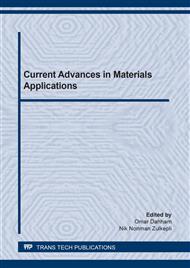p.531
p.541
p.551
p.565
p.578
p.594
p.604
p.615
p.627
Effect of Different Curing on Mechanical Properties of Polymer - Cement Composites
Abstract:
The polymer-cement composites have special specifications, high strength compared to their low density, satisfactory deformability, deterioration resistance, tailored design. This enables the construction of new elements and the structural recovery of the existing parts made of traditional materials. two sets of mixtures were prepared that consist of mortar and polymer to produce the polymer-mortar composites were cured at room temperature and post-cure at 50 ͦ C. The set includes mortar (cement-sand) without water. The polymer was epoxy which is added to the mortar after mixing the hardener with resin. Set consists of the proportion of polymer (15, 20 and 30%).The effect of the polymer was studied on both sets by computing the density also measuring the hardness, compressive strength and flexural strength of specimens. The addition of polymer showed an improvement in these properties and post-cure have improvement properties .the lowest percent of the polymer showed The highest results were density 1133.3 kg/m3, the hardness of composites was 97.28 shore D. the compressive strength was about 100.816 MPa and the value of flexural strength was about 29.418 MPa.
Info:
Periodical:
Pages:
627-635
Citation:
Online since:
July 2020
Authors:
Keywords:
Price:
Сopyright:
© 2020 Trans Tech Publications Ltd. All Rights Reserved
Share:
Citation:


